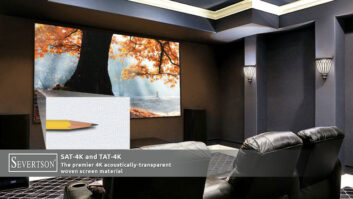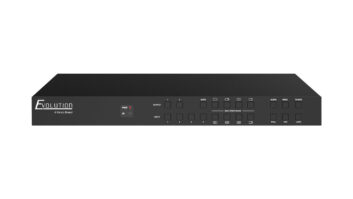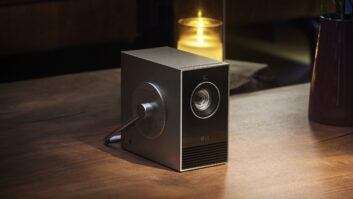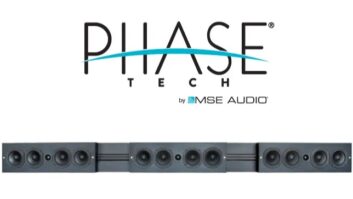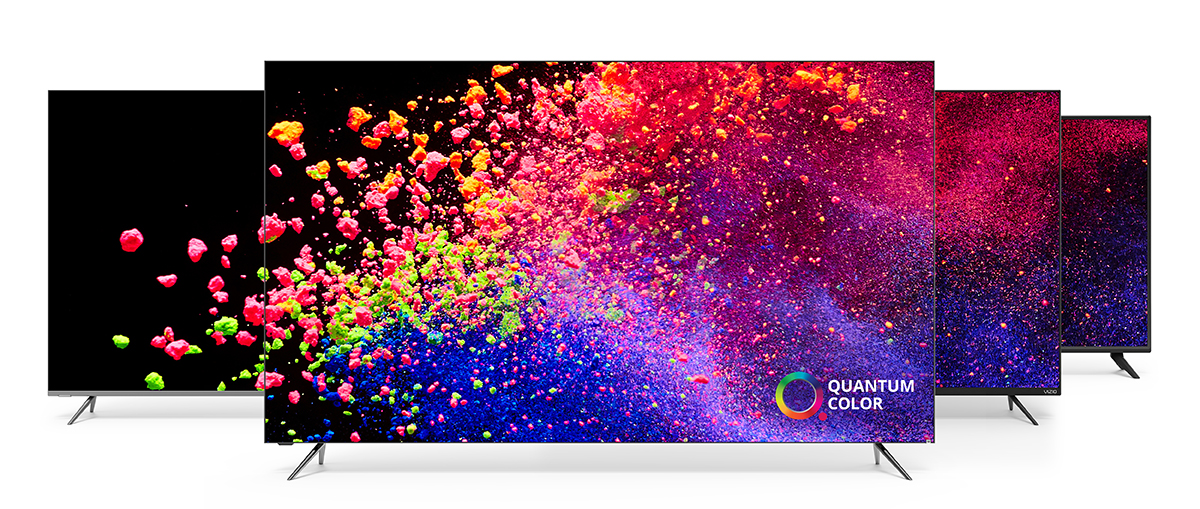
Vizio stepped up the performance of its 4K Ultra HD TVs, expanding the number of models with wide-color-gamut quantum-dot displays, boosting peak brightness and contrast, and adding a trio of Apple technologies: Siri voice control, HomeKit smart-home integration, and Apple AirPlay 2.
With the rollout of its 2019 TV line, Vizio expanded the number of quantum-dot models to 10 from one and migrated the technology down in price from $2,199 for a 65-inch TV in last year’s line to $399 for a 43-inch 2019 TV. The technology also shoots up in price to $3,499 in a flagship 75-inch TV.
Using quantum-dot displays, Vizio is delivering up to 84 percent of the Rec. 2020 color-gamut standard in select SKUs, up from 80 percent in the company’s sole 2018 quantum-dot TV. Vizio is also boosting peak brightness to up to 3,000 nits in two models from a maximum 2,000 in the 2018 lineup. To deliver higher contrast, the company is increasing the number of full-array LED back-lit local-dimming zones to 480 in select models from a maximum 192 in 2018. All but eight of Vizio’s 21 new 4K TVs feature full-array back-lit local dimming, with the number of zones starting at 10.
See also: ‘Game Of Thrones’ Darkness Wasn’t A Problem At All
The quantum-dot displays appear in three TV series: the M Series Quantum, P Series Quantum, and P Series Quantum X. All deliver what product marketing director Carlos Angullo called “class-leading” color gamut and contrast. The V Series of 11 opening-price 4K TVs lacks quantum-dot technology.
All new 4K models are smart TVs incorporating Vizio’s new SmartCast 3.0 OS, which will get a firmware update in the summer to add Apple Siri voice control, Apple HomeKit smart-home integration, and Apple AirPlay 2.
With the Siri upgrade, Vizio expects to be the first company offering TVs compatible with the three most broadly used voice assistants (Amazon Alexa, Google Assistant and Apple Siri) to control TV functions by voice command.
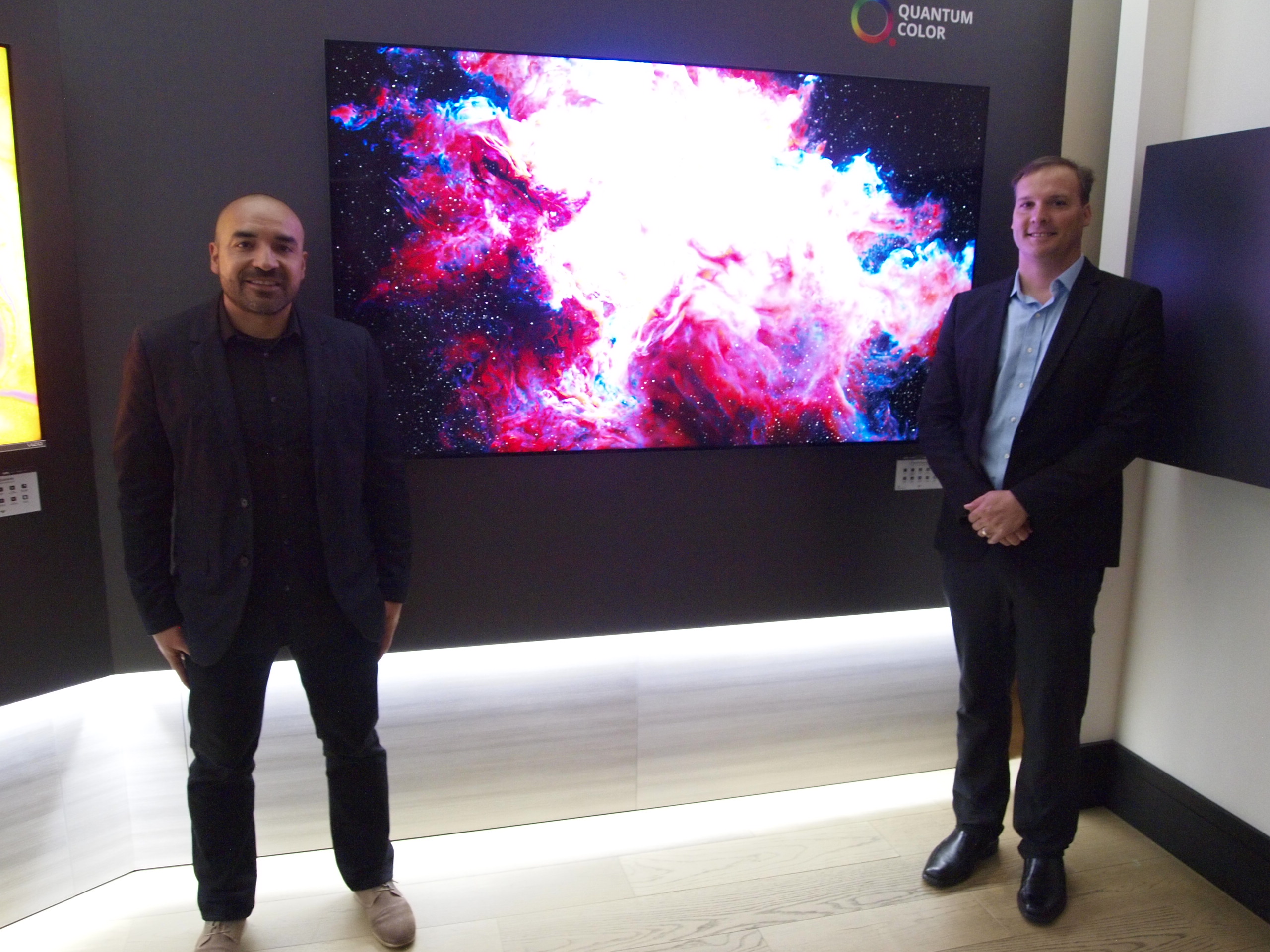
SmartCast 3.0 improvements include faster screen loading, more content recommendations, and a “trending now” row.
As in the 2018 lineup, all 4K models feature HDR 10, Dolby Vision, and Hybrid-log Gamma HDR technologies, embedded smart-TV apps, and Chromecast built in.
The TV lineup is available through such retailers as Amazon, Best Buy, Costco, Sam’s Club, Target and Walmart.
Here’s how the new 4K series compare with one another and with last year’s line:
P Series Quantum X: The top-end series includes a $3,499 75-inch model and a $2,199 65-inch model. Both feature quantum-dot displays that deliver 84 percent of the Rec. 2020 color-gamut standard, up from 80 percent of Rec. 2020 (and 98 percent of DCI P3) in Vizio’s sole quantum-dot TV in 2018.
Peak brightness jumps from 2,000 nits in the 2018 quantum-dot TV to 3,000 in the 65-inch TV and 2,700 in the 75-inch TV. The number of back-lit local-dimming zones soars from a maximum 192 zones in last year’s line to 480 in this year’s 75-inch TV and 384 in the 65-inch model.
P Series Quantum: Two screen sizes of 65 and 75 inches retail for a suggested $1,399 and $2,499, respectively. Their quantum-dot displays deliver 80 percent of the Rec. 2020 color-gamut standard, and peak brightness levels hit 1,100 nits and 1,200 nits, respectively. The number of local dimming zones grows to 200 and 240 zones, respectively.
Last year’s P Series delivered 73 percent of the Rec. 2020 standard (93 percent of P3), peak brightness up to 1,000 nits, and 56 and 120 zones of back-lit local dimming.
M Series Quantum: The quantum-dot series consists of six models split between the M7 and M8 sub series. Both sub series deliver 80 percent of the Rec. 2020 gamut standard.
The M7 lineup consists of four SKUs at 43, 50, 55 and 65 inches at $399, $549, $699, and $899, respectively, with 12 to 20 local dimming zones and with 400 nits of peak brightness.
The step-up M8 sub series features 55- and 65-inch models at $799 and $999. Each features 90 dimming zones with 600 nits of peak brightness.
V Series: All 11 models in this series lack quantum-dot technology, limiting color gamut to the Rec. 709 standard. Only three V Series TVs — a $299 43-inch model, a $469 55-inch model, and a $629 65-inch model — feature back-lit local dimming, with the number of zones ranging from 10 to 12. In those models, peak brightness hits 400 nits.
The eight V Series TVs without local dimming come in 40- to 75-inch screen sizes at prices ranging from $259 to $1,199. Brightness specs for those models were not available.
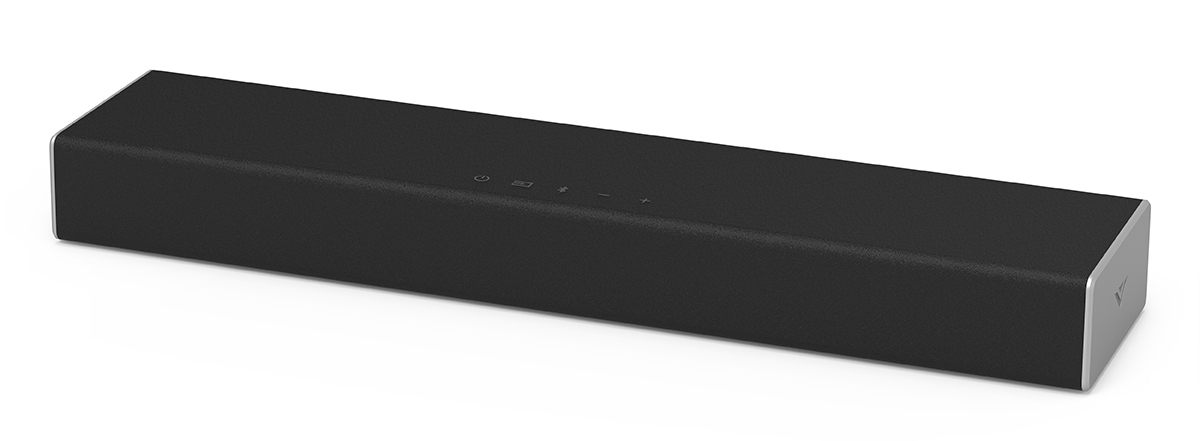
Soundbars: In audio, two more soundbars come with both Dolby Atmos decoding and DTS Virtual:X post processing, expanding the selection of bars with both Atmos and DTS Virtual:X to five SKUs from three. Vizio also brought down the opening price of soundbars with DTS Virtual:X to a suggested $69 from $179.
The two new Dolby Atmos/DTS Virtual:X bars, available in June, are priced at a suggested $699 and $469. They join carryover Dolby Atmos/DTS Virtual:X models at $999, $799 and $499.
Two other new soundbars include the $69 20-inch 2.0-channel SB2020n-G6, which features DTS Virtual:X but lacks Dolby Atmos and an outboard subwoofer. In the 2018 line, DTS Virtual:X started at $179 for a 36-inch 2.1 soundbar with outboard subwoofer.
DTS Virtual:X simulates height and surround channels in home theater systems that lack up-firing height speakers and separate surround speakers.
See also: 8K Association Now Accepting New Membership Applications




